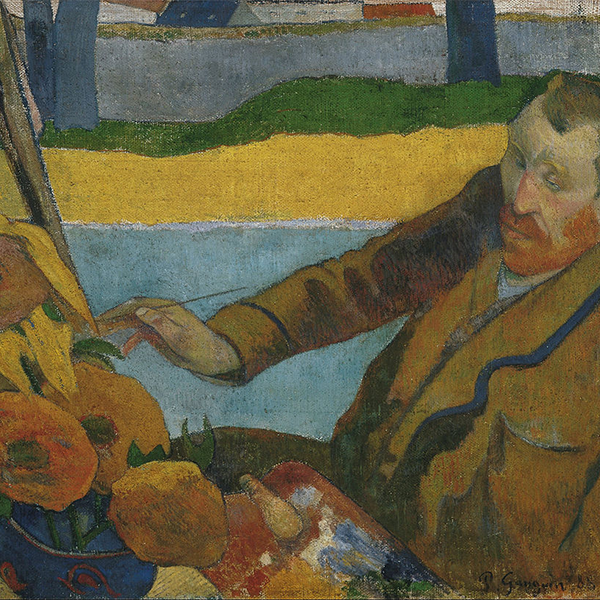The relationship of Van Gogh and Gauguin is a long and complex one with highs and lows. Among the definite achievements of the relationship the artistic heights it brought, as well as some real insights into their time and circumstances. One such testament if the Gauguin painting, “The painter of Sunflowers”.
In late 1888, Paul Gauguin went to stay with Vincent Van Gogh in Arles, France. Van Gogh had long been trying to convince him to come there, and had even prepared and decorated a room for him. Among the decorations for this room were several paintings of Sunflowers, later to be among the most iconic works of Van Gogh. Gauguin liked these immensely. As Van Gogh described in a letter to his brother Theo:
“It is a kind of painting that rather changes in character, and takes on a richness the longer you look at it. Besides, you know, Gauguin likes them extraordinarily. He said to me among other things – ‘That…it’s…the flower.’ You know that the peony is Jeannin’s, the hollyhock belongs to Quost, but the sunflower is somewhat my own.”
Based on his liking of the sunflower paintings themselves, Gauguin decided to paint their master. Based on this he sat down and painted The Painter of Sunflowers in December 1888.
It is a bright happy painting with clear light colors. The reds and yellows of the sunflowers are repeated in the colors used to depict Van Gogh’s own face, thus illustrating his affinity with the subject. There is a clear connection between Van Gogh and his flowers. This brighter use of colors is also evidence of Gauguin’s post-impressionist style. Rather than depict the colors neutrally, they are indeed arbitrarily used, especially when depicting Van Gogh’s face.
The Painter of Sunflowers is a great example of both the artistic genius of Gauguin but also of the last of the happy times for the 2 artists as 1888 drew to a close.
The Painter of Sunflowers is today on display at the Van Gogh museum in Amsterdam, Holland.

